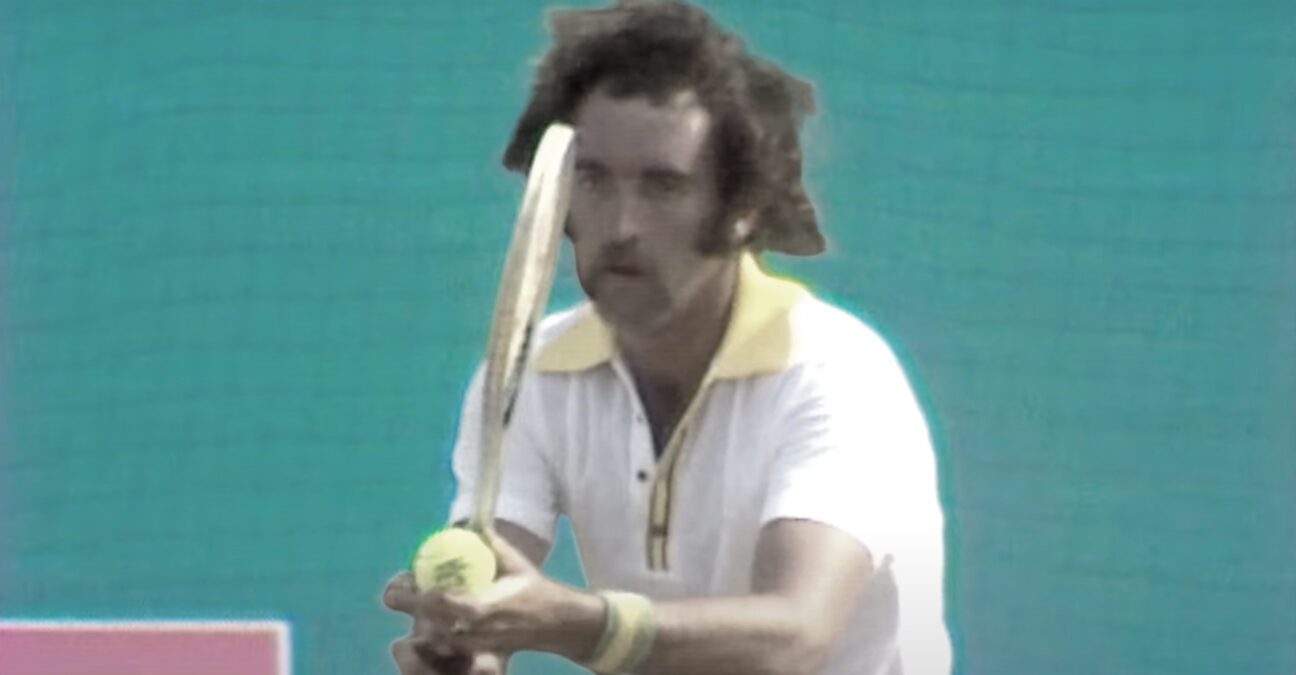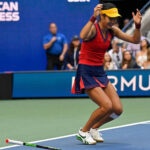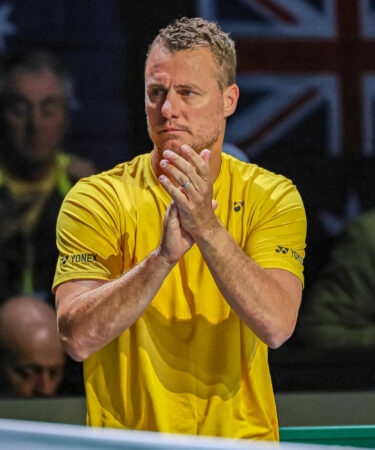January 4, 1976: The day Edmondson won the Australian Open, the lowest-ranked player to ever win a Grand Slam title
Every day Tennis Majors takes you back in time to celebrate a great moment in tennis history. Today, we go back to 1976 to witness how Mark Edmondson won the Australian Open in most unexpected circumstances

What exactly happened on that day?
On this day, January 4, in 1976, Mark Edmondson, ranked only No 212 in the world, achieved one of the biggest surprises in tennis history, winning the “battle of the moustaches” against John Newcombe (6-7, 6-3, 7-6, 6-1) to claim the Australian Open title. He was the lowest-ranked player to win a Grand Slam tournament since the establishment of the ATP rankings in 1973, a record which still stands 46 years later. Although, at the time, seeing an Australian player winning the home Grand Slam was anything but unusual, Edmondson would also remain the last Aussie to achieve that feat.
The players: Mark Edmondson, John Newcombe
- Mark Edmondson: the pro who worked as a hospital cleaner to fund his travel
In 1976, 21-year-old Mark Edmondson was still at the start of his tennis career. He had only qualified for two Grand Slam main draws before, reaching the second round at both the Australian Open and Wimbledon in 1975. Holding the 212th position in the ATP rankings, he had never played a final on the tour. A few months before the Australian Open, Edmondson worked as a cleaner in a hospital to put some money aside and be able to travel to his tournaments.
- John Newcombe: The Australian legend and seven-time slam singles champion
John Newcombe was an Australian tennis legend. He mostly relied on a great serve, which he consistently followed to the net whenever his opponent could return it (he was known for often hitting aces even on his second serve). With such a game style, he was particularly strong on fast surfaces, as confirmed by his list of achievements: a seven-time Grand Slam champion, he never triumphed on clay at Roland-Garros. He won all of his major tournaments on grass: the Australian Open (1973, 1975), Wimbledon (1967, 1970, 1971) and the US Open (1967, 1973).
Along with Rod Laver, he was the only player to win both Wimbledon and the US Open as a professional player after having won these tournaments as an amateur. At the time, Newcombe also held 16 major titles in doubles and three in mixed doubles and also participated in five successful Davis Cup campaigns. In 1968, he was a part of the “handsome eight”, the first players to participate in the famous WCT circuit founded by Lamar Hunt and in 1974, he became the second player after Ilie Nastase to reach world No 1 on the ATP rankings, a position he occupied for 8 weeks.
The place: Kooyong Stadium, Melbourne
Unlike the other Grand Slam tournaments, the Australian Open (first known as the Australasian Championships and later the Australian Championships) had moved several locations throughout the years. In fact, the event switched cities every year before it settled in Melbourne in 1972, and no less than five Australian cities had hosted the event at least three times: Melbourne, Sydney, Adelaide, Brisbane and Perth.
The event was held on grass at the Kooyong Stadium in a posh easter suburb of Melbourne. Its position on the calendar had changed several times as well between early December and January, going from being the first Grand Slam of the year to being the last. At the time, many of the top players skipped the Australian Open, mainly because of the remoteness and the low prize money.
The facts: Mind games, scorching heat and a storm could not stop Edmondson
When the 1976 Australian Open began in late December 1975, Mark Edmondson was certainly not on anyone’s radar as a candidate for the title. The world No 212 barely sneaked into the draw.
“I was the last or second last in,” Edmondson would tell Pat Cash for CNN’s Open Court, years later. “It was a 64-man draw then, not 128. (…) With a 64 draw and not all the world’s players coming to the Open like they do now … at the 11th hour someone pulled out and I was in.”
Lucky enough not to face a seeded player in the first round, Edmondson fought hard to make his way into the second round, defeating Peter Feigl in five sets (1-6, 6-4, 6-7, 6-4, 6-1). Relying on a great serve, he then upset the fifth seed Phil Dent and Brian Fairlie to make his way into the quarter-finals, where he was scheduled on the Center Court for the first time to face 12th seed, Dick Crealy. Before his match, Edmondson ran into John Newcombe.
‘Have you ever played on the center court?’ Newcombe asked.
‘No,’ responded Edmondson.
‘Let me give you a few hints.’, replied the seven-time Grand Slam champion.
Who knows if Newcombe’s advice actually helped Edmondson? The fact remains that the 21-year-old Australian defeaed Crealy in straight sets (7-5, 7-6, 6-2) and in the semi-finals, he outplayed one of the greatest players of all time, veteran Ken Rosewall, 41 years old at the time (6-1, 2-6, 6-2, 6-4). Against all odds, the newcomer, who entered the main draw at the last minute, was now in the final of the Australian Open.
I’m suffering from shock and exhaltation or something
Mark Edmondson
In the final, Edmondson faced another legend of his country, the man who had given him advice before his first appearance on the main arena: defending champion John Newcombe. In the meantime, Newcombe had gone from coaching to gamesmanship, when, after Edmondson’s semi-final win, he declared: ‘He beat Ken today, but he doesn’t realize he’s got to play John Newcombe tomorrow.”
However, this attempt to put doubt in Edmondson’s mind didn’t seem to perturb the underdog. Despite losing the first set (7-6) in scorching heat (130 people were treated for heat exhaustion during the first two sets), Edmondson hung on to break his opponent’s serve and take the second set 6-3. In the third set, a storm fell upon Kooyong, interrupting the match for half-an-hour, but despite his lack of experience at that level, the 212th player in the world didn’t lose his concentration. His big serve didn’t betray him and he won the “Battle of the Moustaches” in four sets (6-7, 6-3, 7-6, 6-1), without letting the great Newcombe break his serve a single time.
“I’m suffering from shock and exhaltation or something,” said Edmondson, according to The New York Times. “It is just too good to believe. I think I might have a couple of bottles of bubbly tonight.”
What next? Edmondson remains the last Australian male to win his home Grand Slam
Mark Edmondson’s triumph at the 1976 Australian Open would remain his only Grand Slam singles title. He would reach the semi-finals twice more in slams, in Melbourne in 1981 and at Wimbledon in 1982, the year he would reach his highest ranking as world No 15. He would however accumulate five major titles in doubles and two in mixed doubles. His record as the lowest-ranked Grand Slam champion of all-time would remain unchallenged.
The 1976 Australian Open final would remain the last ever played by John Newcombe. The former world No 1 would decline and scarcely play on the tour until his retirement in 1978.
Although it would have been hard to believe at the time, after Australian tennis had been spoiled with so many great players, in the 42 following years, no other local player would ever triumph in Melbourne. During this time, three Australian male players would win other Grand Slam tournaments: Pat Cash, Patrick Rafter and Lleyton Hewitt – but were unable to lift their home Grand Slam. Rafter’s best attempt at the Australian Open would end in the semi-finals; Hewitt would lose in the 2005 final, while Pat Cash would be defeated in the final twice, in 1987 and 1988.





